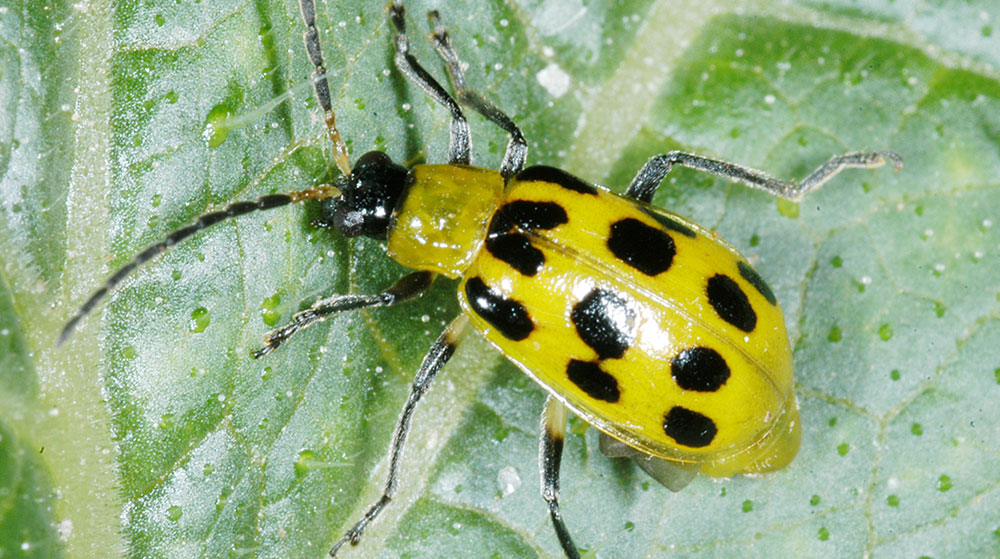Spotted Cucumber Beetle Vol. 2, No. 11

Diabrotica undecimpunctata
Order: Coleoptera
Family: Chrysomelidae
Spotted cucumber beetles belong to a large and important group of beetles known as leaf beetles. Although they are sometimes mistaken for lady beetles, because of their spots, spotted cucumber beetles are damaging pests of many garden vegetables, especially cucurbits: watermelons, cantaloupes, cucumbers, pumpkins, and squash. These beetles overwinter as adults and are sometimes seen flying about on warm winter days. They are strong fliers with an acute sense of smell and are strongly attracted to young cucurbit plants. Sometimes they destroy stands of squash or melon seedlings before they have fully emerged from the ground. Damage to seedlings is the most important damage caused by these pests, but they also destroy blooms and scar squash and melon rinds. In addition, spotted cucumber beetles spread several important plant diseases, some viruses and some bacteria.
This is such an important pest insect that it has two common names; it is also known as southern corn rootworm. In addition to cucurbits, adult beetles also feed on the silks of corn, causing poor kernel set, and the ground-dwelling larvae feed on the roots of corn and many other vegetables. The larvae can damage stands of both sweet corn and field corn by killing young seedlings. Adults, which are about ¼ inch long, also cause minor damage to blooms of roses and other ornamental plants.
Control: Control adult cucumber beetles in home vegetable gardens with sprays containing permethrin, bifenthrin, or carbaryl. Check young plants and emerging seedlings regularly and spray promptly if necessary. Older plants can tolerate higher numbers of beetles. Before spraying edible plants with any pesticide, always be sure to note the pre-harvest interval for the product you are using and the crop you are using it on.
See page 5, and pages 12-14, of Extension Publication 2347, Insect Pests of the Home Vegetable Garden for more information on spotted cucumber beetles.
Let others know about the Bug’s Eye View Newsletter: If you know someone who might enjoy receiving the Bug’s Eye View Newsletter, please share. They can easily subscribe by clicking on the sign up link shown below.
Blake Layton, Extension Entomology Specialist, Mississippi State University Extension Service.
The information given here is for educational purposes only. Always read and follow current label directions. Specific commercial products are mentioned as examples only and reference to specific products or trade names is made with the understanding that no discrimination is intended to other products that may also be suitable and appropriately labeled.

